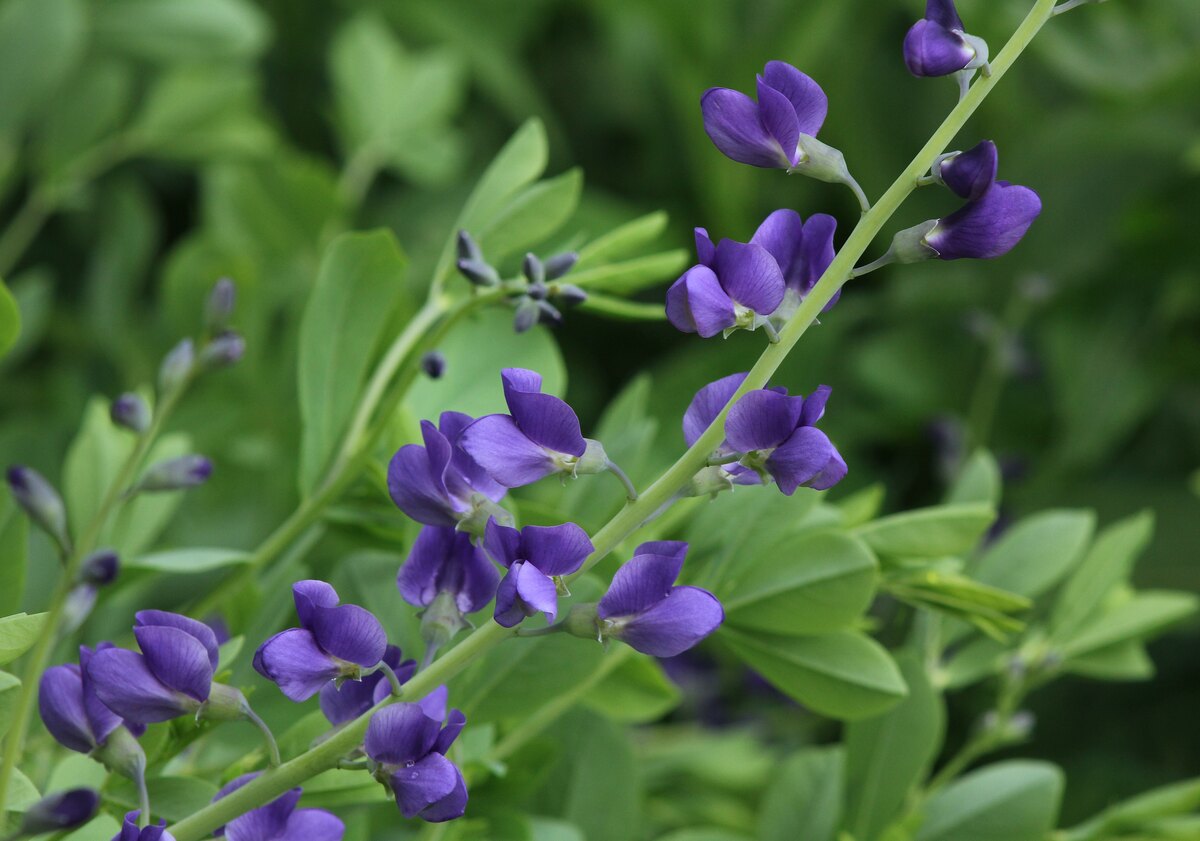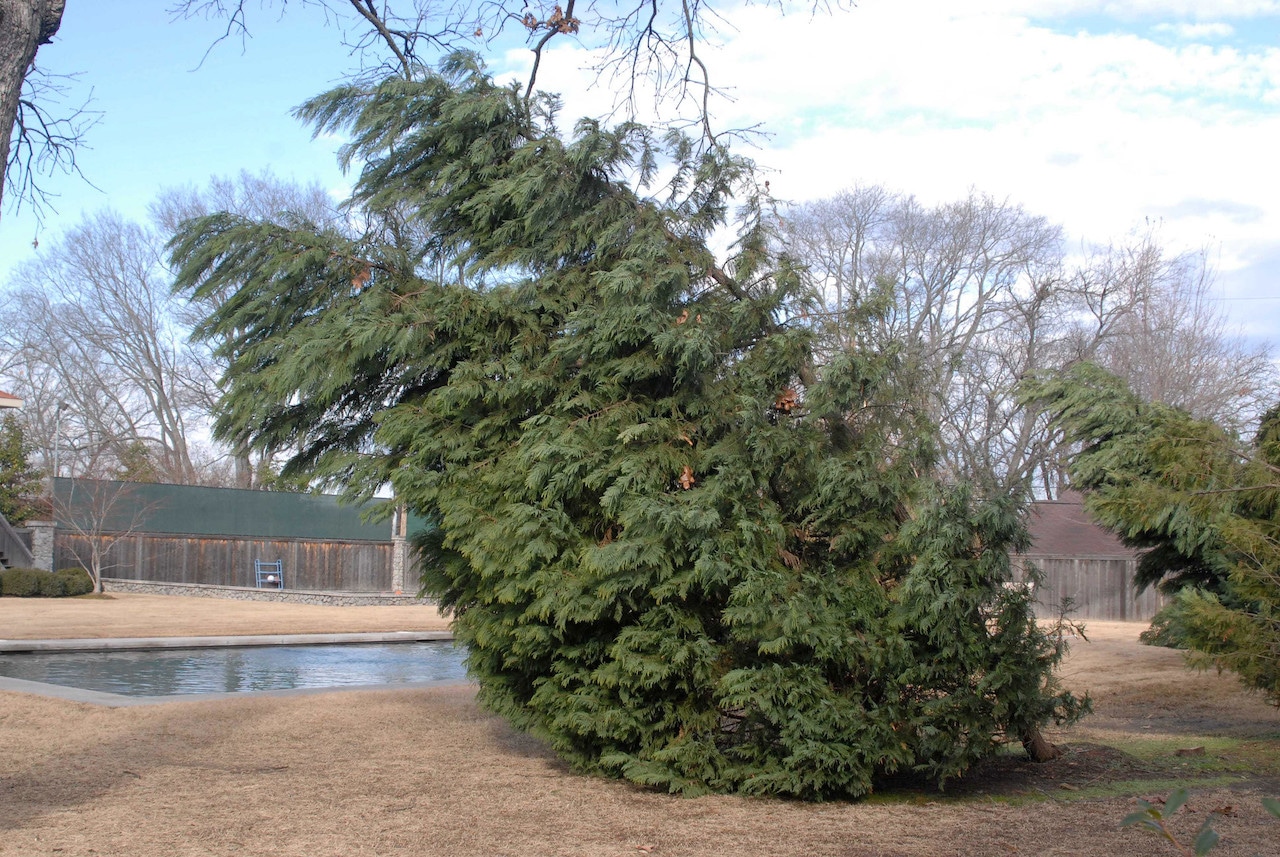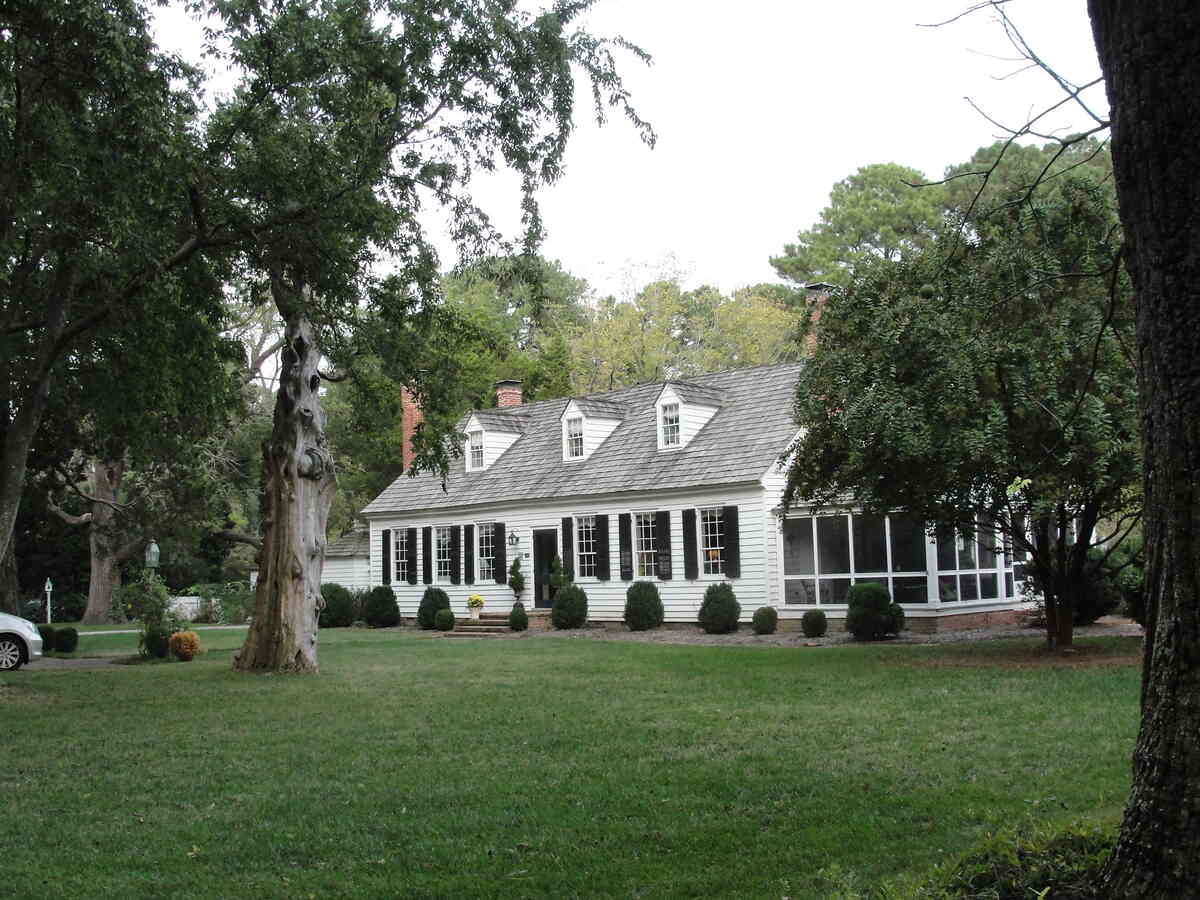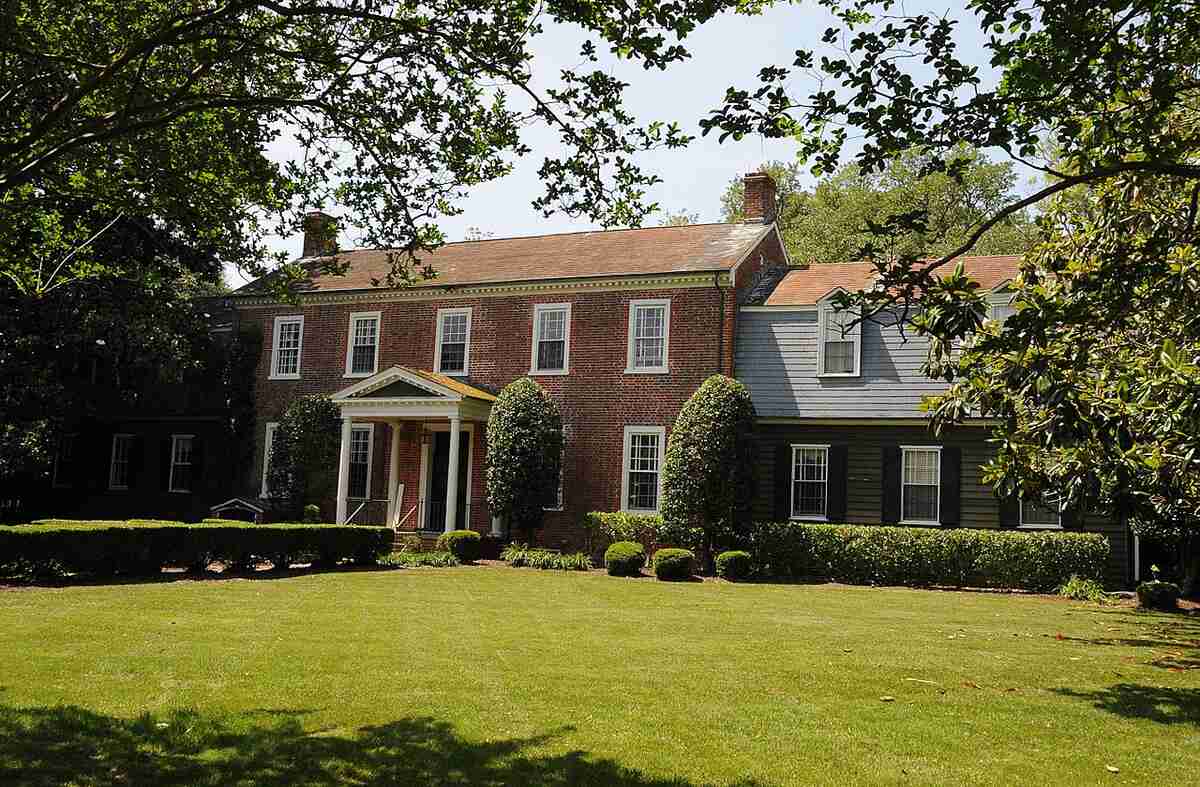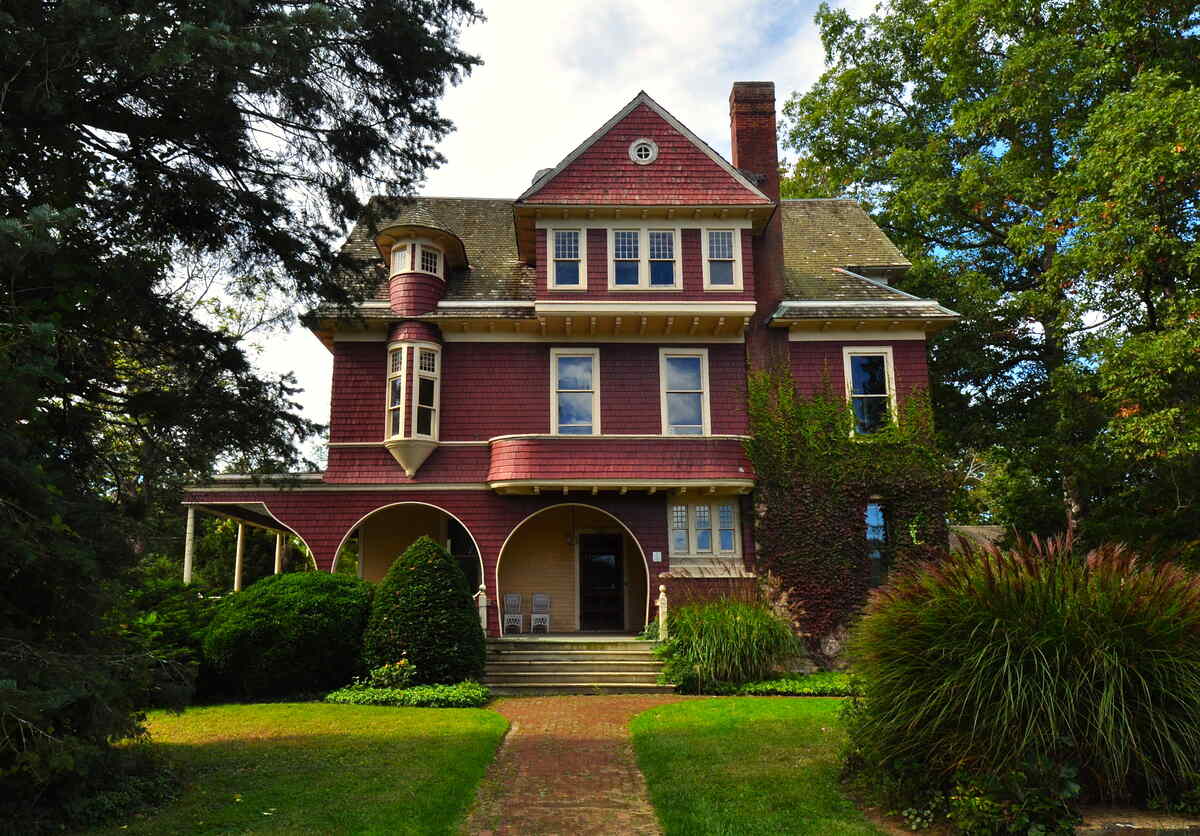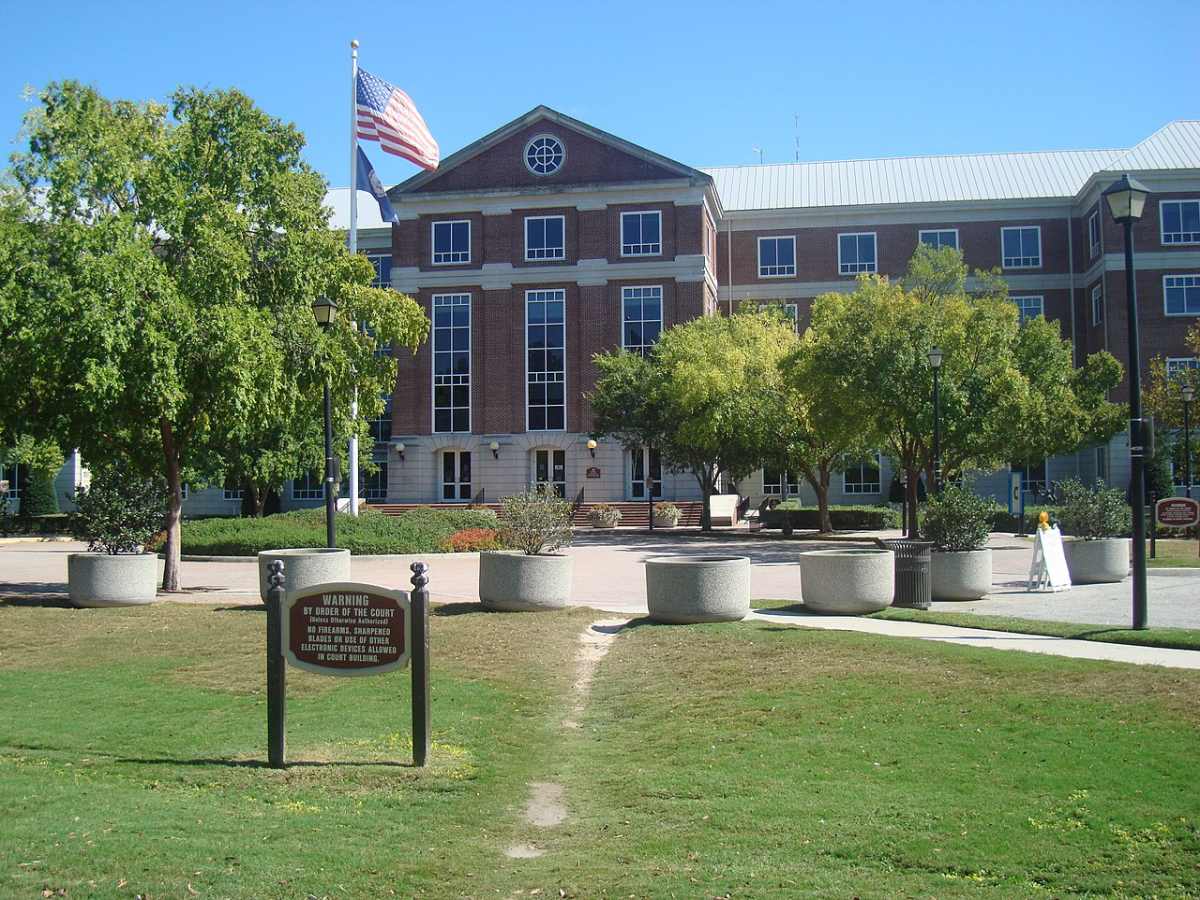
Thanks to balmy summers and mild winters, the Virginia Beach area is bursting with exceptional native tree species. Narrowing the choice of which to plant on your property can be tricky, so we’ve done the homework to help make it easy for you: We’ve gathered a list of the 10 best native trees to plant in Virginia Beach.
Virginia Tech professor emeritus of horticulture and Extension specialist Dr. Roger Harris recommends planting smaller trees if you have the patience to wait for them to mature. “Smaller trees transplant better than larger trees,” he says. “Transplanting larger trees is stressful to the tree because 95% of the root system is removed when the tree is dug.”
While there are many trees to choose from, these are the 10 best native trees to plant in Virginia Beach.
- American Hophornbeam (Ostrya virginiana)
- American Sycamore (Platanus occidentalis)
- Black Cherry (Prunus serotina)
- Eastern Redbud (Cercis canadensis)
- Scarlet Oak (Quercus coccinea)
- Sourwood (Oxydendrum arboreum)
- Sweetbay Magnolia (Magnolia virginiana)
- River Birch (Betula nigra)
- Red Maple (Acer rubrum)
- Virginia Pine (Pinus virginiana)
- FAQ
American Hophornbeam (Ostrya virginiana)
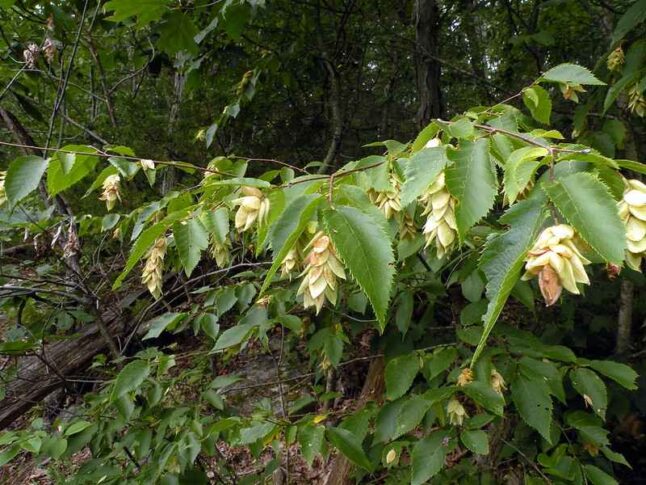
Topping out at 20 to 50 feet, this slow-growing understory tree thrives in full sun or part shade. While incredibly resilient to drought, the one thing this tough tree cannot tolerate is salt spray.
Hophornbeams erupt into white catkins in April, and the leaves change to yellow and reddish-orange in fall. In winter, the unusual reddish, flaking bark adds a little seasonal interest.
- USDA hardiness zones: 5-9
- Sun exposure: Full sun and partial shade
- Soil needs: It’s adapted to a variety of soils but thrives in moist, well-drained soils with a pH between 4.2 to 7.6.
- Foliage: Deciduous
- Bloom Time: Mid-spring to late spring, around April
- Mature size: 20-50 feet in height and 15-30 feet in width
American Sycamore (Platanus occidentalis)
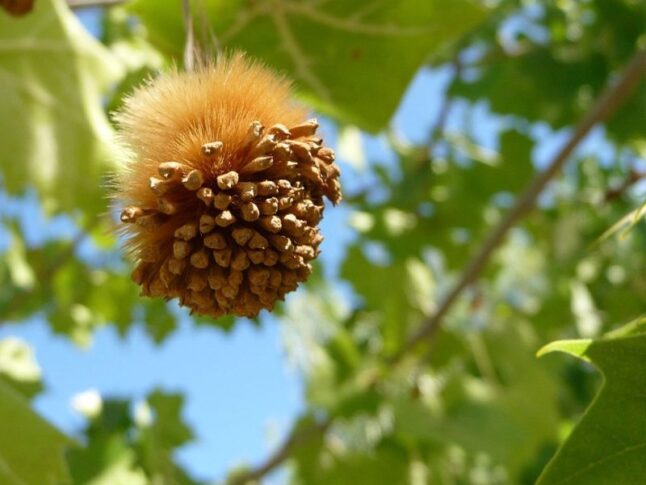
This fast-growing, large canopy tree can reach heights of 60 to 120 feet, so it needs a lot of space. It has lush, green leaves and tolerates wet and saturated soils. Fall colors hit sycamores early, and so does leaf fall. Known for their distinctive creamy-white and camouflage-patterned trunks, these are stately trees that look great in winter.
However, this is a type of tree that is better adapted to very large, wide spaces. For most homeowners, it won’t be a viable option. There is also the fact that they are vulnerable to blight, powdery mildew, and sycamore lace bug. So if you opt for this marvelous tree, you’ll need a great space and good preventive care.
- USDA hardiness zones: 4-9
- Sun exposure: Full sun
- Soil needs: It’s native to alluvial soils and capable of withstanding saturated soil.
- Foliage: Deciduous
- Bloom Time: Leaves and flowers appear between April and May
- Mature size: Can reach heights of 60 to 120 feet tall and a diameter of up to 13 feet (the greatest of any temperate hardwood tree).
Black Cherry (Prunus serotina)
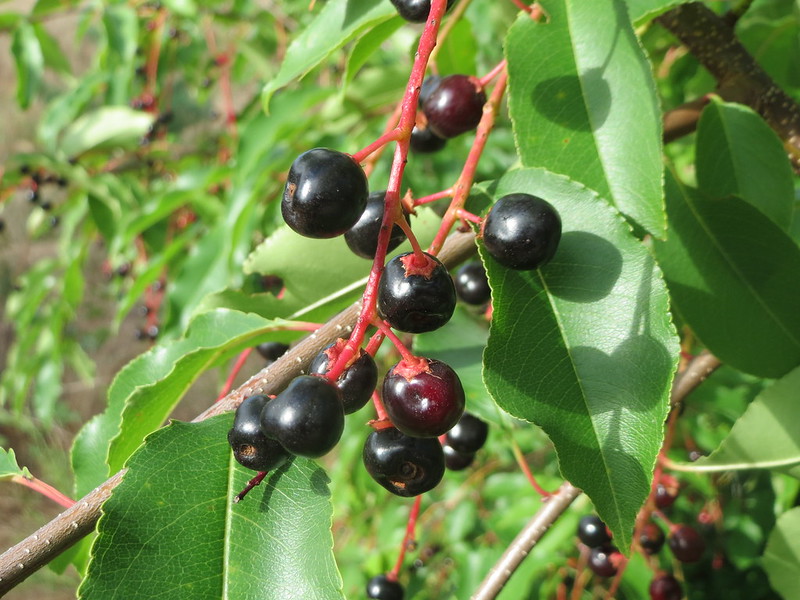
The largest native of the cherry trees, black cherry trees are beautiful and ornamental. Growing between 50 and 80 feet tall, these trees have canopies that spread anywhere from 30 and 60 feet wide.
They do best in full sun to partial shade and can grow (although slowly) even in full shade. Can tolerate dry soils, but prefer a rich, moist but well-drained soil type. Black cherries burst into delicate white blooms from May to June and then form lustrous, dark fruit from late summer to mid-fall.
- USDA hardiness zones: 3 – 9
- Sun exposure: Prefers full sun and partial shade, growing slowly in dense shade
- Soil needs: Does best in moist, but well-drained soil. Can adapt to loam, clay, and even sand.
- Foliage: Deciduous
- Bloom Time: Flowers bloom between May and July (and around March-April in the Southwest); fruiting occurs around June-October.
- Mature size: Typically grows to 50-80 feet tall and 30-60 feet wide, with native plants growing up to 124 feet tall (geographic variants differ widely in height).
Eastern Redbud (Cercis canadensis)
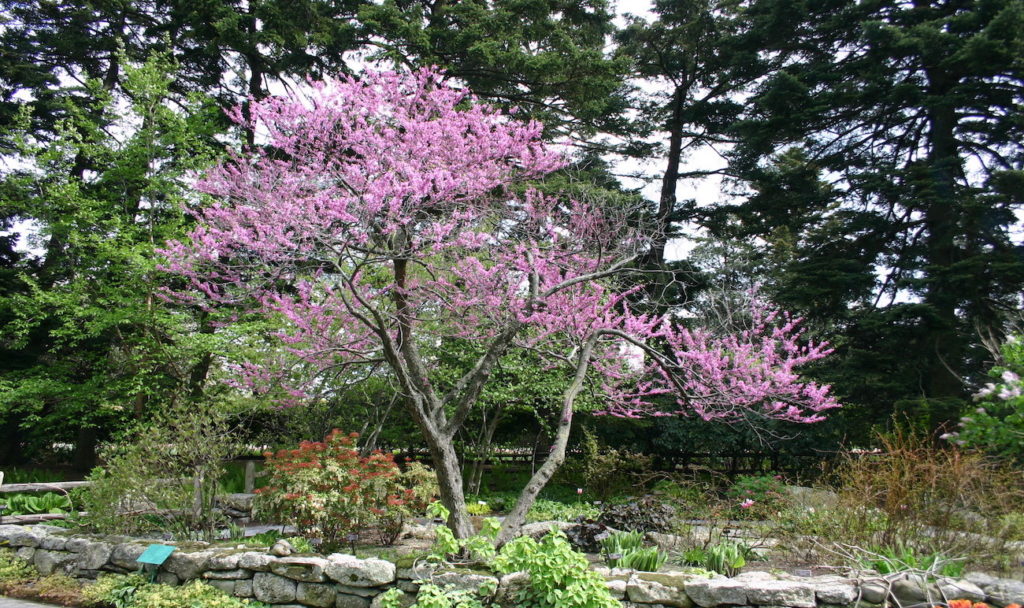
Fast-growing and beautifully shaped, redbud trees are fantastic understory trees. Try layering one beneath a large canopy tree for texture and color. Growing as high as 30 feet, the umbrella-shaped canopy is typically as wide as the tree is high.
From April to May, the branches of this ornamental tree burst into brilliant color with tight clusters of deep pink flowers. Even in winter, the graceful shape of the redbud’s trunk and branches create visual interest. Native to riverbanks and woodlands, redbud trees prefer well-drained soils that are moist and fertile.
Another benefit? This tree attracts native bees and pollinators aplenty when in bloom.
- USDA hardiness zones: 4 – 9
- Sun exposure: Full sun or partial shade
- Soil needs: Any moist, well-draining, nutrient-rich soil
- Foliage: Deciduous
- Bloom Time: March-May
- Mature size: 20 – 30 feet tall, with 25 – 35 foot spread
Scarlet Oak (Quercus coccinea)
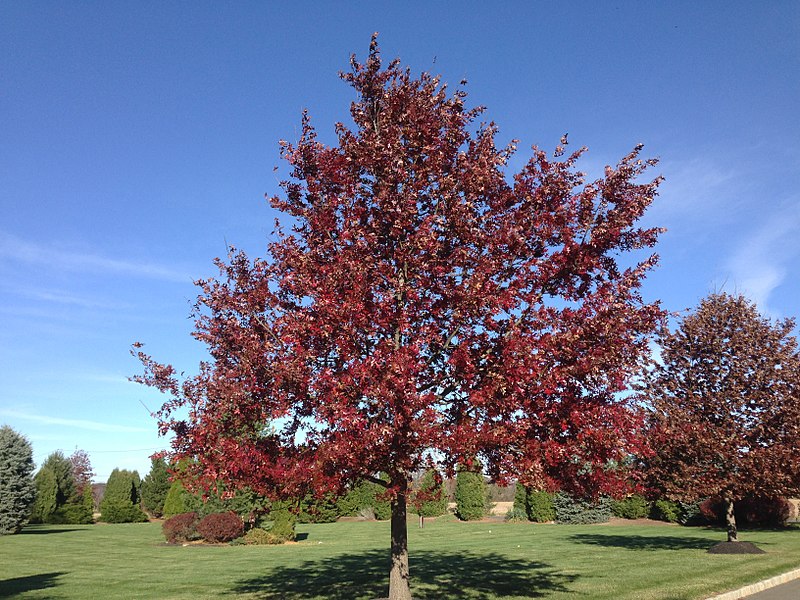
This is one of the faster-growing cousins of the white oak (Quercus alba), making it an ideal shade tree for the yard. Long-lived and tolerant of a wide range of soils, the scarlet oak grows up to 70 feet with a 40-50 foot spread.
With yellowish-green catkins in the spring, reddish-brown acorns in summer, and brilliant scarlet foliage in the fall, this is a tree for all seasons. Because of its beautiful color, it is a good choice to be used as a street tree or shade tree.
- USDA hardiness zones: 4 – 9
- Sun exposure: Full sun
- Soil needs: Prefers sandy, acidic soil, but adapts well to average well-drained soil.
- Foliage: Deciduous
- Bloom Time: April to May
- Mature size: This tree grows to be around 50-70 feet tall and 40-50 feet wide.
Sourwood (Oxydendrum arboreum)
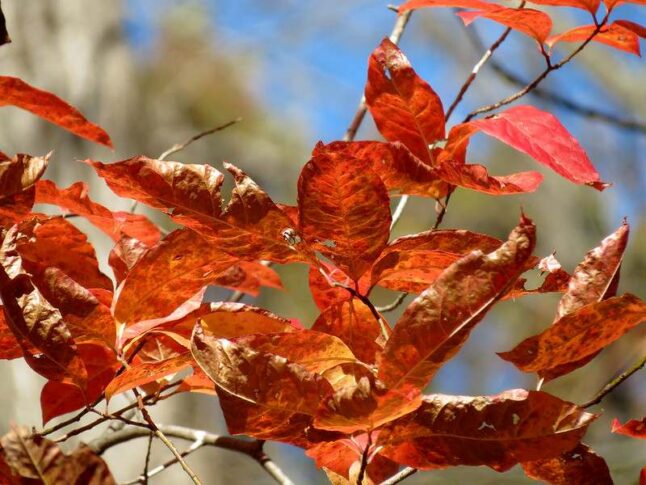
This visually stunning tree can grow 20 to 70 feet tall, with a 10- to 50-foot crown. Thriving in full sun to partial shade, a sourwood performs best in well-drained to dry, acidic soils. With small, bell-shaped white flowers in spring and deep red leaves in autumn, sourwood trees are a beauty throughout the year.
- USDA hardiness zones: 5 – 9
- Sun exposure: Full sun, tolerates partial shade
- Soil needs: Prefers acidic, moist, well-drained soil.
- Foliage: Deciduous
- Bloom Time: Blooms in early summer, between June and July
- Mature size: Can grow from 20 to 70 feet tall, with 10- to 50-foot spread.
Sweetbay Magnolia (Magnolia virginiana)

This showy, ornamental Virginia native has glossy evergreen leaves and reaches heights between 10 and 35 feet. The magnificent, large flowers of the sweetbay magnolia start out as reddish buds, then burst into showy white flowers that are fragrant and long-lasting.
A curiosity: Did you know magnolias are considered to be one of the oldest trees in the world? This ancient beauty’s flowers appear in May and last well into July. Performing best in moist, rich, acidic soils, these iconic Southern trees prefer part shade.
- USDA hardiness zones: 5 – 10
- Sun exposure: Full sun to part shade
- Soil needs: It tolerates boggy, wet soils (differently from other magnolias), but prefers moderately moist, acidic soils.
- Foliage: Evergreen to semi-evergreen in warmer climates and semi-evergreen to deciduous further north
- Bloom Time: May to June
- Mature size: It grows from 10 to 35 feet in height and width.
River Birch (Betula nigra)
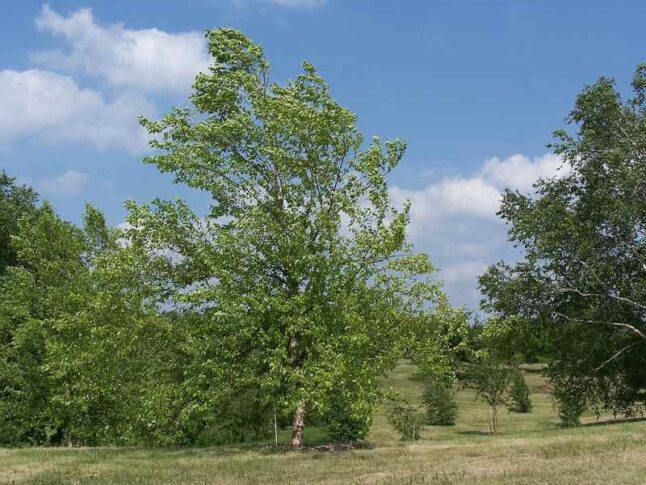
Fast-growing and long-lived, this multiple-trunked tree adds great year-round visual interest to gardens. Its distinctive, silvery peeling bark and cinnamon-colored trunk stand out. Its foliage in the fall turns yellow, and in the spring, it erupts in red and green catkins.
The river birch is also a host for hundreds of butterfly species and attracts songbirds in the fall with its small seeds. It grows well in full sun and tolerates partial shade, and thrives in moist, acidic soils — either sandy or clay is fine.
While many trees and plants struggle to thrive in the local sandy soils, river birch will perform well even without any amendments to poor, sandy soil. (By the way, if you are struggling with how to improve sandy soils, check out our article for ways to amend sandy soils in your lawn.)
- USDA hardiness zones: 4 – 9
- Sun exposure: Full sun to partial shade
- Soil needs: It survives best in moist and acidic conditions, but tolerates drier soils.
- Foliage: Deciduous
- Bloom Time: April to May
- Mature size: Grows up to 40 to 70 feet tall and 40 to 60 feet wide
Red Maple (Acer rubrum)
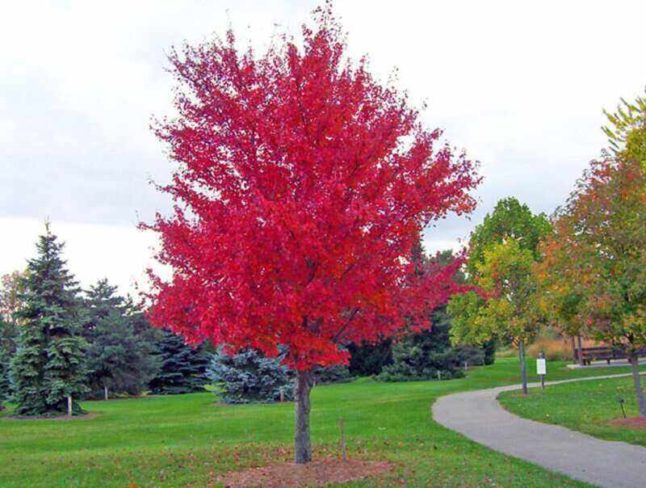
Perfect for yards that don’t receive full sun, the red maple tops out at 120 feet with a 30- to 50-foot wide canopy. Its leaves are beautifully shaped, and the small, red flowers that cover the tree in spring go on to form lovely brownish-yellow seed pods in summer. The red, orange and yellow fall colors of this native maple tree are unmatched in vibrancy.
Red maples do best planted in wet clay, loamy, or sandy soils, but can tolerate dry soils. It is a great choice for lawns or parks but beware to not plant it too close to sidewalks or driveways, since its flattened root system can cause the concrete to buckle.
- USDA hardiness zones: 3 – 9
- Sun exposure: Prefers full sun to partial shade, but it can adapt well to full shade.
- Soil needs: Prefers moist, acidic soil, but grows in a wide variety of soil and light conditions and is therefore considered a “supergeneralist.”
- Foliage: Deciduous
- Bloom Time: Flowers bloom in early spring (March to April).
- Mature size: Mature old trees can grow up to 120 feet tall, but they commonly reach 40 to 70 feet tall and 30 to 50 feet wide.
Virginia Pine (Pinus virginiana)
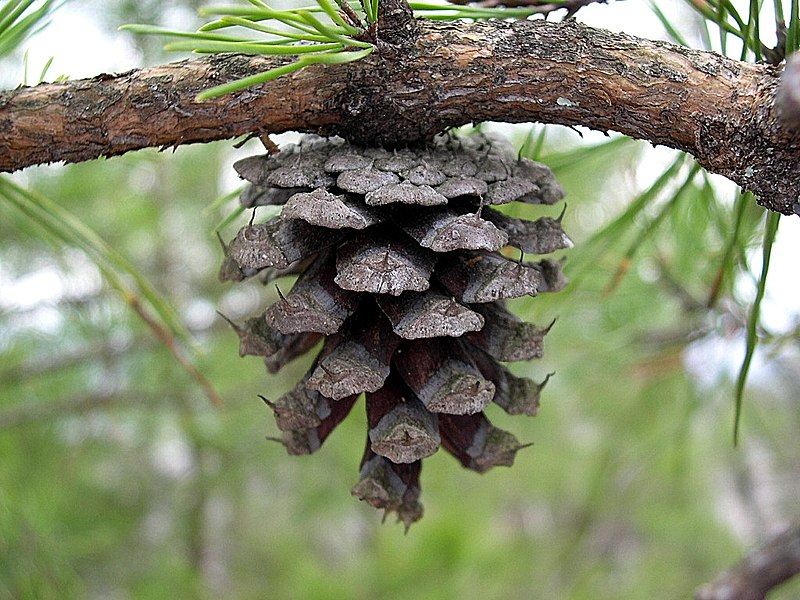
No list would be complete without at least one conifer. Well-suited to poor, dry soils, the Virginia pine is a hardy, sun-loving conifer that typically grows up to 40 feet. With a twisted trunk and a rugged character, this pine is best grown as an edge tree on large lots where it adds value to local wildlife as a food source.
- USDA hardiness zones: 4 – 8
- Sun exposure: Full sun
- Soil needs: It prefers well-drained, acidic clay or sandy loams, but grows well in a variety of soil conditions.
- Foliage: Evergreen
- Bloom Time: This tree doesn’t have flowers, but from March to May it blooms in yellow pollen cones.
- Mature size: Grows around 15 to 40 feet tall and 10-30 feet wide.
Honorable Mentions
When it comes to native trees in Virginia Beach, there are so many great options! And since we couldn’t include all of the enormous variety nature offers us, here are some other honorable mentions:
- ‘Princeton’ American Elm (Ulmus americana)
- Shadblow Serviceberry (Amelanchier canadensis)
- American Holly (Ilex opaca)
- Black Gum (Nyssa sylvatica)
- Flowering Dogwood (Cornus florida)
- Eastern Redcedar (Juniperus virginiana)
- White Fringetree (Chionanthus virginicus)
- Loblolly Pine (Pinus taeda)
FAQ
Yes, in addition to its beachside attractions, Virginia Beach is committed to growing and sustaining the city’s urban forest for decades to come. The urban tree canopy is vital to the city’s stormwater management plan and provides welcome shade around the city. Additionally, Virginia Beach has been a Tree City USA since 1980.
Virginia Beach has around 3.2 million trees, a large amount of forested land for the city’s size.
There are many benefits to planting native trees. Native trees:
• Strengthen the local ecosystem by using less supplemental water to become established and by surviving longer than non-natives
• Increase wildlife habitat in the area
• Provide a low-maintenance option when compared to non-native tree species. (With native trees, you won’t have to worry about fertilizing as much and adapting soil conditions for them to survive.)
Final Thoughts
When you’re selecting trees and plants for your Virginia Beach site, go native when you can. Not only are these trees best suited to the region, but they provide valuable habitats for native wildlife. Choose the best native trees to plant in Virginia Beach and look forward to decades of enjoyment, watching them thrive.
Do you still have doubts about tree care? Are you having trouble caring for the trees you already have? Hire one of our top-ranked landscaping experts in Virginia Beach. They can evaluate your current trees, treat diseases, trim, and even plant new trees, helping the canopy in your Virginia Beach lawn to thrive for decades to come.
Note on our expert for this article: Dr. Roger Harris is professor emeritus of horticulture at Virginia Tech and an Extension Specialist in woody plants. His research focuses on woody landscape plants from the time they’re planted in the nursery until they’re established in the landscape. His goal is to help people create environmentally sustainable landscapes.
Main Photo Credit: Virginia Beach Municipal Center / Rlevse / Wikimedia Commons / CC BY-SA 3.0
